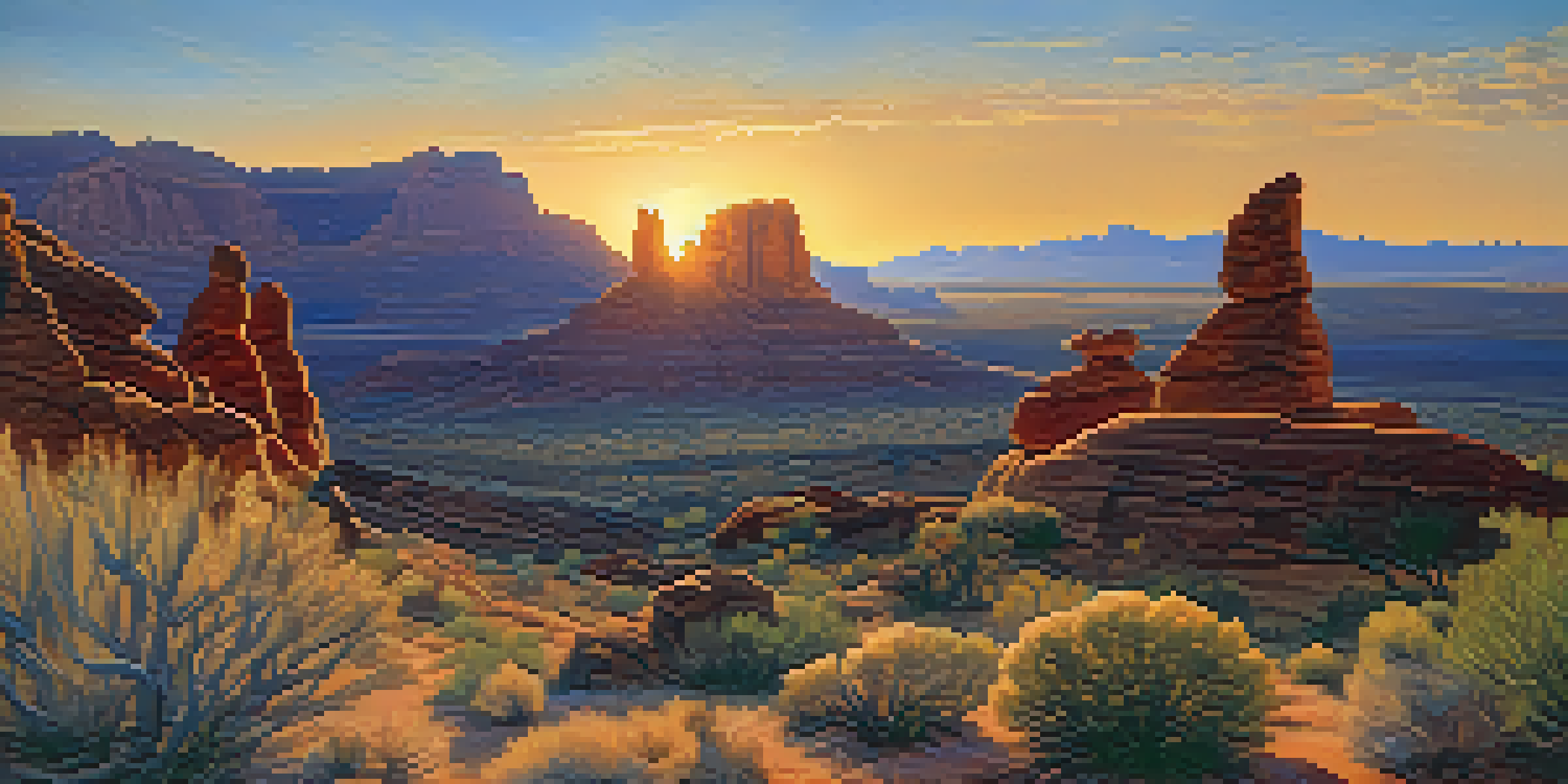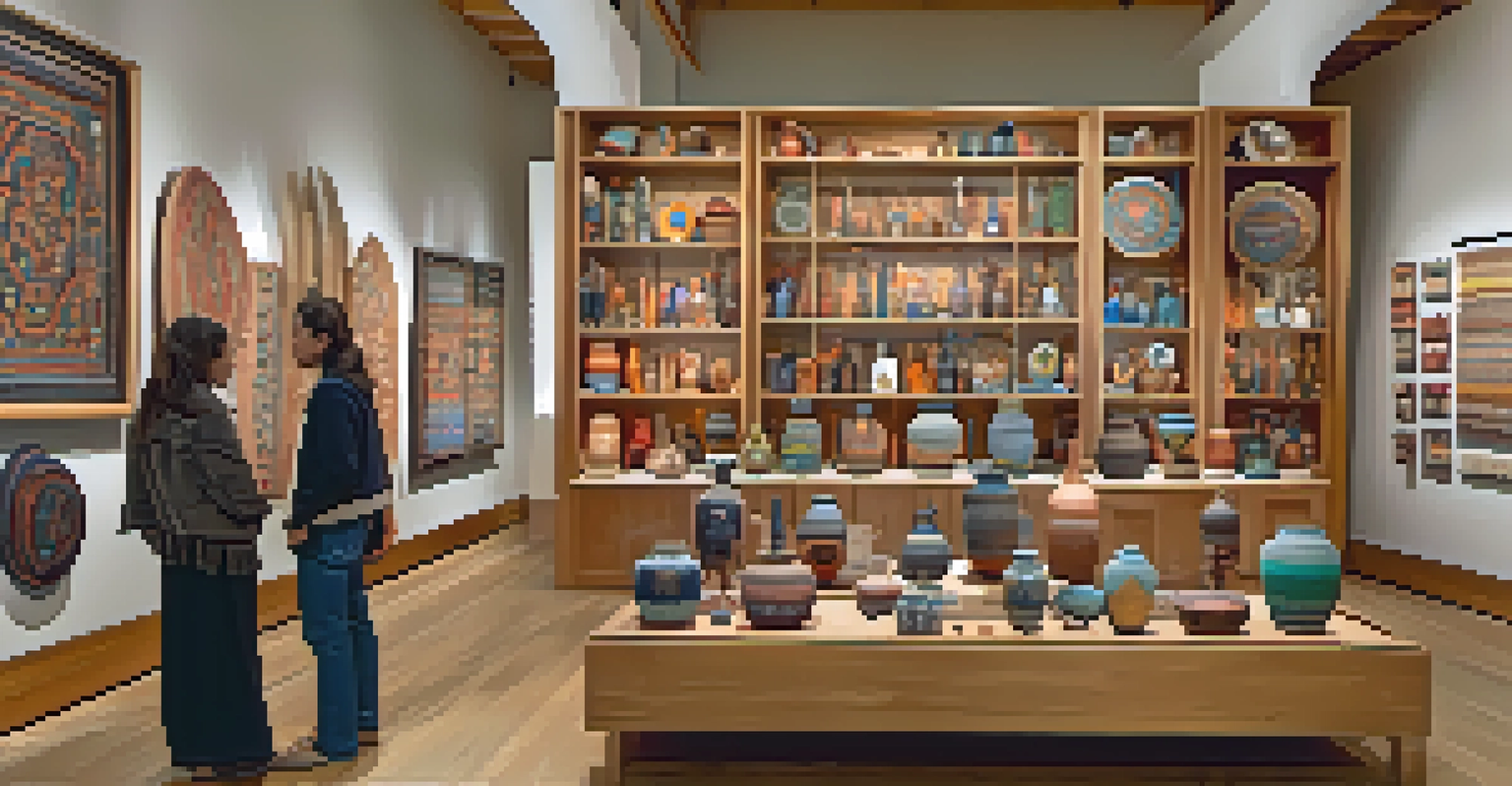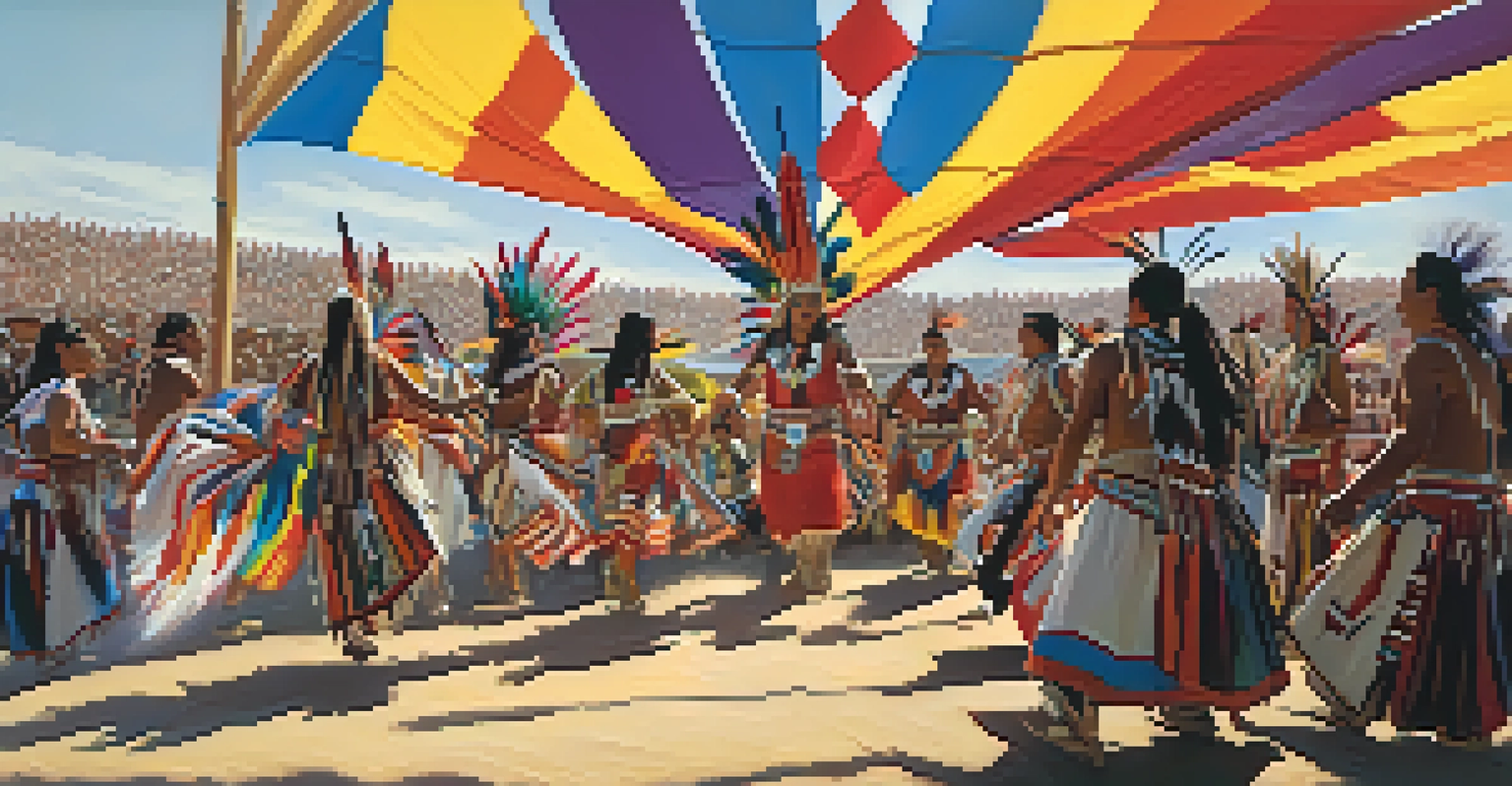Exploring Native American Heritage in Utah's Cultural Landscape

Introduction to Utah's Native American Heritage
Utah's landscape is more than just scenic vistas; it's a canvas painted with the rich history of Native American tribes. Before settlers arrived, various tribes thrived here, each contributing to the cultural tapestry of the area. Understanding this heritage is key to appreciating the depth and diversity of Utah's cultural landscape.
The land is a living entity, and we must respect it as such, for it carries the stories of our ancestors.
Tribes like the Ute, Navajo, and Paiute have called Utah home for centuries, each with their own stories, traditions, and languages. Their influence can be seen in the art, music, and festivals celebrated throughout the state. By exploring these traditions, we not only honor their past but also enrich our understanding of the present.
In the following sections, we'll dive deeper into the specific tribes, their contributions, and how visitors can engage with this vibrant heritage. Whether you're a local or a traveler, embracing these stories can transform your experience of Utah.
Key Tribes and Their Cultural Significance
The Ute Tribe, one of the largest and most influential in Utah, has a rich history rooted in the region's mountains and valleys. Their connection to the land is profound, with traditions that include storytelling and art that reflect their deep respect for nature. Visitors can learn about their history through museums and cultural centers dedicated to preserving this legacy.

The Navajo Nation, though primarily associated with Arizona and New Mexico, has significant ties to Utah as well. Their artistry, especially in weaving and pottery, showcases a blend of functionality and beauty that speaks to their cultural identity. Engaging with Navajo artisans provides an authentic glimpse into their heritage.
Rich Native American Heritage in Utah
Utah's cultural landscape is deeply influenced by Native American tribes like the Ute, Navajo, and Paiute, each contributing unique traditions and stories.
Lastly, the Paiute tribe, known for their deep understanding of the desert's ecosystem, offers insights into sustainable living and land stewardship. Their traditions around agriculture and storytelling are vital to understanding not just their survival but their thriving culture. Exploring Paiute history helps connect visitors to the land in a meaningful way.
Indigenous Art: A Window into Culture
Art plays a pivotal role in expressing Native American heritage, and Utah is home to many talented Indigenous artists. From intricate beadwork to stunning pottery, each piece tells a story that reflects the artist's culture and experiences. Visiting local galleries can provide a deeper appreciation of these unique art forms.
To know where you are going, you must know where you have been.
Rock art, or petroglyphs, found throughout Utah offers an ancient glimpse into the lives of Native Americans. These carvings and paintings on rock surfaces reveal insights about their beliefs, rituals, and daily activities. Exploring these sites can be a captivating way to connect with the past.
In addition to traditional forms, contemporary Indigenous artists are redefining their craft, merging modern techniques with traditional themes. This evolution of art not only preserves heritage but also speaks to the ongoing journey of Native American identity. Engaging with this art allows visitors to witness the living culture of Indigenous peoples.
Cultural Events Celebrating Native Heritage
Utah hosts a variety of cultural events that celebrate Native American heritage, providing an opportunity for everyone to engage and learn. Powwows, for example, are vibrant gatherings filled with music, dance, and storytelling. These events are not just entertainment; they are a celebration of community and tradition.
Festivals such as the Utah Navajo Fair highlight the unique culture of the Navajo Nation, featuring traditional foods, crafts, and performances. Attending such events allows visitors to experience the richness of Native American culture firsthand, fostering understanding and appreciation.
Engaging with Indigenous Art
Art serves as a vital expression of Native American heritage in Utah, showcasing both traditional and contemporary works that reflect cultural identity.
By participating in these cultural celebrations, individuals can support Indigenous communities and help preserve their heritage. These events serve as a bridge, connecting people from all walks of life to the stories and traditions that shape Utah's cultural landscape.
Exploring Historic Sites and Landmarks
Utah is dotted with historic sites that provide insight into Native American history. Locations such as Bear's Ears National Monument and Monument Valley are not just stunning natural wonders, but they also hold spiritual significance for many tribes. Visiting these sites can deepen your understanding of the Indigenous connection to the land.
Museums like the Natural History Museum of Utah and the Utah Museum of Fine Arts feature exhibits focusing on Native American history and artistry. These institutions are committed to showcasing the contributions of Indigenous peoples, making them excellent resources for anyone looking to learn more.
Guided tours led by Native American guides offer a unique perspective on these historic sites. Their personal stories and knowledge can bring the history to life, creating an unforgettable experience for visitors. Exploring these landmarks with an Indigenous lens encourages respect and appreciation for their cultural significance.
Educational Resources for Deeper Understanding
For those looking to delve deeper into Native American heritage in Utah, there are numerous educational resources available. Books, documentaries, and online courses can provide a wealth of information about the tribes and their histories. Libraries and cultural centers often have curated lists to help guide your exploration.
Local universities and colleges may also offer courses on Native American studies, providing a structured way to learn about the complexities of these cultures. Engaging in academic discussions can enhance your understanding and spark meaningful conversations about heritage and identity.
Cultural Events Foster Connection
Attending cultural events and festivals allows visitors to experience and appreciate the vibrant traditions of Native American communities in Utah.
Community workshops and events focused on Indigenous history and art are wonderful opportunities to engage directly with Native voices. These experiences foster dialogue and understanding, creating a more nuanced view of the rich heritage that shapes Utah's cultural landscape.
Conclusion: Embracing Native American Heritage
Exploring Native American heritage in Utah is more than a journey through history; it's an invitation to connect with the living cultures that thrive today. By engaging with Indigenous communities, attending cultural events, and visiting historic sites, we can honor their past and support their future. Each experience enriches our understanding and appreciation of this vibrant heritage.
As we reflect on the stories and traditions of Native Americans in Utah, we also recognize our role in preserving and respecting these cultures. It's essential to approach this journey with humility and an open heart, ready to learn from the wisdom of those who came before us.

Ultimately, exploring Native American heritage enhances our collective experience of Utah. It reminds us that the land is not just a backdrop for our activities but a living testament to the rich tapestry of cultures that have shaped it. Let's continue to celebrate, honor, and learn from this incredible legacy.